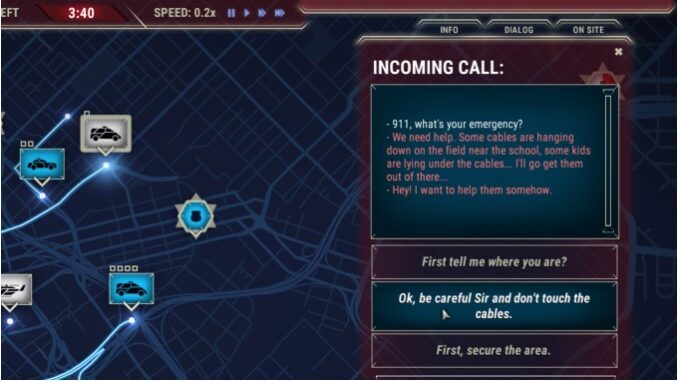
Ludogogy has entered into an agreement with Gamification Journal, based in Seoul, South Korea, for the mutual exchange of articles. This is the ninth of those articles we are publishing and it was in exchange for Deepa Prusty’s article about collecting feedback from online gamified courses.
The attractiveness of the Strategy game
Various game genres have been continuously mixed and newly derived throughout a long history. It no longer makes much sense to talk about recently released games in terms of genre. There are so many and they merge and mingle. Now, it’s the time for the fusion and expansion of platforms such as PC, console, mobile, virtual reality, metaverse, etc. Gamers also don’t talk much about game genres anymore. The single game genre is ‘Fun’.
Although the border between genre and platform has gradually decreased, there are some games that have focused on only one kind of experience. Strategy games have remained consistently popular with gamers for decades.
There are notable strategy simulation games like the “System Soft ‘Daisenryaku’ series”, “Sid Meier’s Civilization series”, “Heroes of Might and Magic series, HoMM”, “BANDAI NAMCO Entertainment Inc. Super Robot Wars series”, “KOEI TECMO GAMES CO., LTD. Romance of The Three Kingdoms series”, and these are recognized as representative of the work of the companies that produced them. Although many games have been changed over time, these games haven’t changed much at all, and tend towards tradition rather than the change. Why are people so consistently and continuously attracted to these strategy simulation games?

Push and Pull
‘Push and Pull’ is important between lovers. It’s the same in strategy simulation games. ‘Push and Pull’ is required between the game and the player(s). The reason why this genre has been attractive is that at its core there is considerable ‘Push and Pull’.
The key to the strategy simulation game is to figure out and analyze given information. Gamers gain satisfaction from their efforts to make the best choices. The game continuously asks ‘Are you sure about your choice or decision? What are you supposed to do in the specified case?’. The game player quickly gets bored in case of easily expected situations.
These are the three key characteristics in the strategy simulation game. These are just the basics; there are much more complex game mechanisms in real games.
1. Small, but (sometimes) many
The strategy simulation game sets the limit on the information which gamers can use. Gamers must make decisions with limited information. Unclear information means that game players do not always decide well. In the early stages, a dim fog appears. The player experiences uncertainty, including the apprehension that he or she doesn’t know what will pop up in the fog.
If it pulls, it pushes. Sometimes, there is a lot of information provided. This makes it hard to categorize the information. Or sometimes the information includes a mix of meaningless, false or useless signals – ‘red herrings’. This also introduces doubt or even makes the player think ‘Why does the game treat me like this?’.
Throughout the process, players are continuously thinking about their best choices or wrong ones.
2. The best choices starts from doubt.
The strategy simulation pushes the player towards doubt and deep thought. Players unwittingly get immersed in this process. They gain experience and knowledge regardless of the outcomes. Feedback from this process provides the basis to make choices in the future.
The results of choices cannot be always right, or enjoyable. So, almost all strategy simulation games allow a lot of opportunities for saving and reloading. There are various reasons why the strategy fails. Players didn’t look at the information carefully, or didn’t understand the overall context, or they didn’t have much ability to handle it well, or there can even be a element of luck involved. The strategy simulation game continuously delivers positive or negative experiences to the player.
3. There aren’t any definite correct answers.
Except the traditional tabletop games such Chess or Baduk (Go), almost all strategy simulations contain story and quest. Despite several failures by players, the overall process continuously flows.
The core of strategy simulation games is that the choice can be the best right now, but it can be either the best or worst later. The wrong choice can be fixed, and a good choice can lead to bad results at any time.
This is why gamers love this genre for a long time. Players overcome the worst choice, and try to make efforts for the best results. They want to prove that their strategy is correct in this process. They feel more fun in harder and more difficult situations. They gain experience through failure in many situations, but they are building their ‘big picture’ by overcoming these.
It looks like a failure, but it can be a foundation of success later. In addition, it seems to be a success, but can contain the seeds of later failure. The strategy simulation game pulls and pushes the players without stopping.
Strategy simulation is everywhere
The challenge that the organization or team encounter is like a game quest. The characteristics of strategy simulation games can be found in the real world. Processes such as information collection & categorization, expectation about possible variables, planning solutions, and gaining knowledge through failure applies similarly in the game world and the real world.
In other words, corporate work can be approached as a sort of strategy simulation or from a game perspective. Through the fun in the strategy simulation game, participants can actively participate in, get motivation, and enhance their ability to work.
Games with titles like ‘Factory’, ‘Management’, ‘Tycoon’ can be hardly considered as work from players’ perspective. The reason why these games are attractive is that realistic work is changed into various game mechanisms.
The attempt to transform the ‘strategic’ approach to work into a game is done in various ways. For example, narrative themes such as handling customers’ complaints, human resource allocation and utilization by management, or figuring out possible variables related to changes in advance are continuously occurring.

The strategy simulation game is often a single-player experience, but various opinions can be collected by gamification. If the organizational ‘Strategists’ can share their opinions with each other, they can get a higher probability to make better choices than being alone.
Gamification doesn’t just focus on simple ‘fun’ and ‘performance’ alone. The purpose of the game can be a quest or stage of a project, but the purpose of the gamification is performance enhancement and improvement. Therefore, through the process of endless push and pull, and choices, strategy simulation games provide a good model for ability enhancement.
One usual meaning of ‘Strategy’ is planning for the future, through a process of analyzing past results and learning from them. The process of deriving individual or organizational strategies is similar in both the game and real world. Understanding overall organizational structure and capacity, and getting the strategy to work are not a simple accomplishment of purpose, but a process of continuous maintenance. Organizations which clearly understand their capacities, which gain experience from failures and develop strategies to handle them are not affected by small failures. They have the power to fix wrong choices. It’s like strategy simulation games with long traditions. Perhaps, readers might have experience similar characteristics of this genre without knowing. Shall we find this?
- The Push and Pull of Strategy Games - 7th September 2022





Be the first to comment